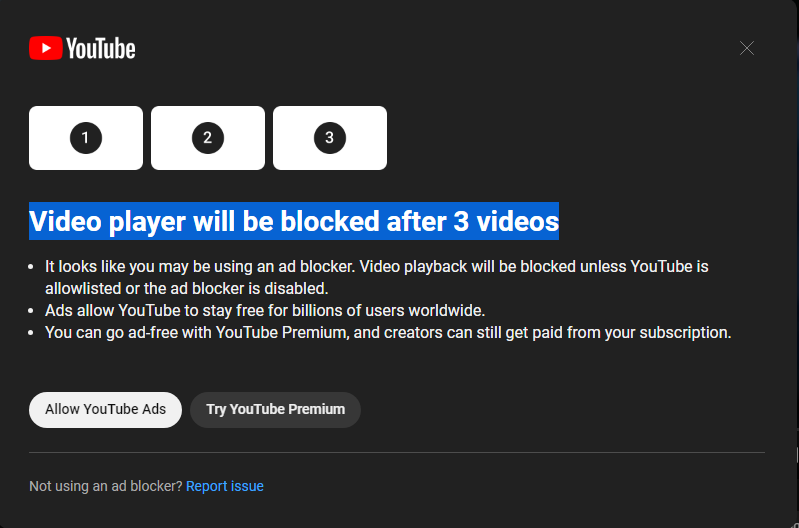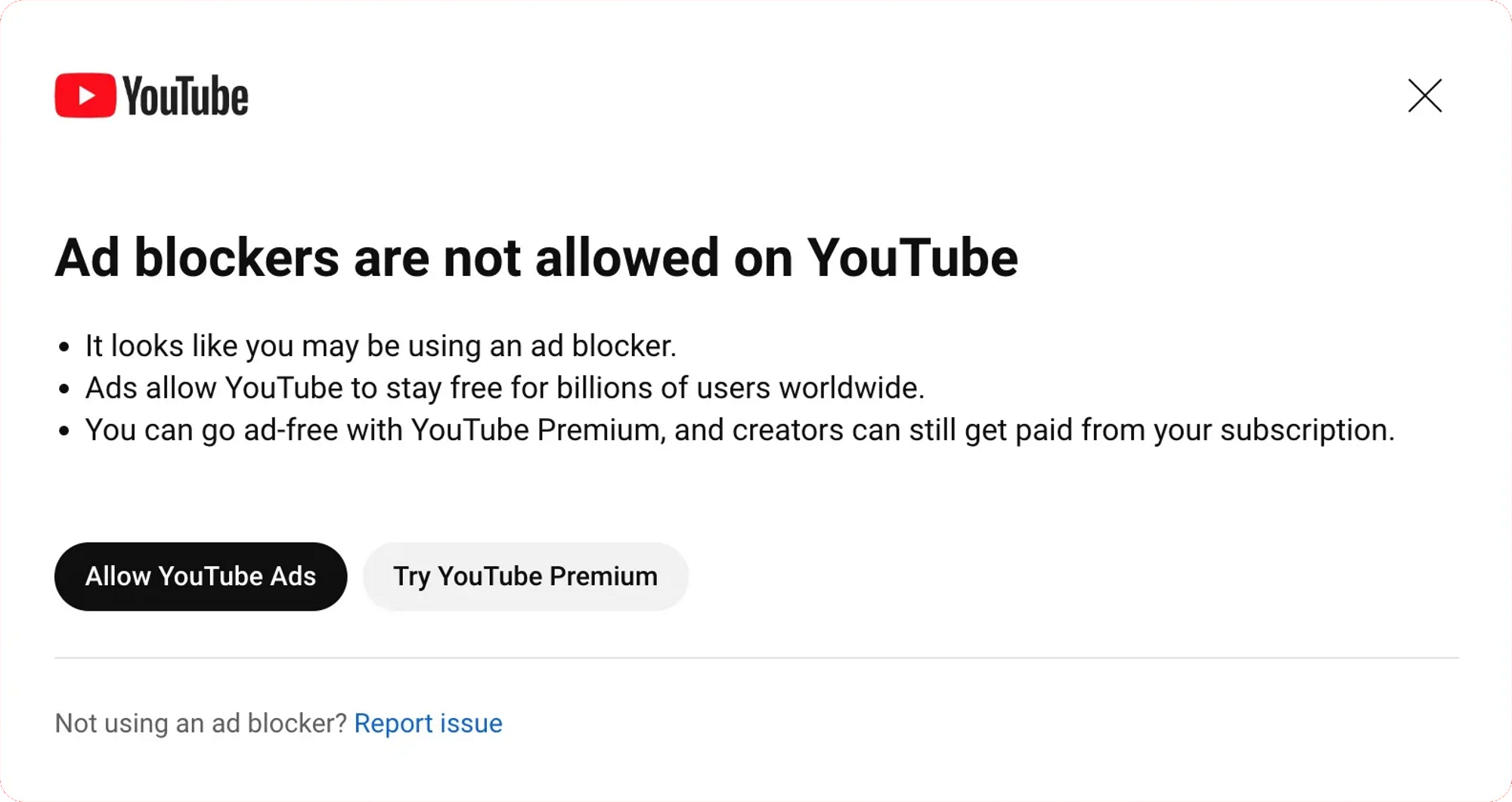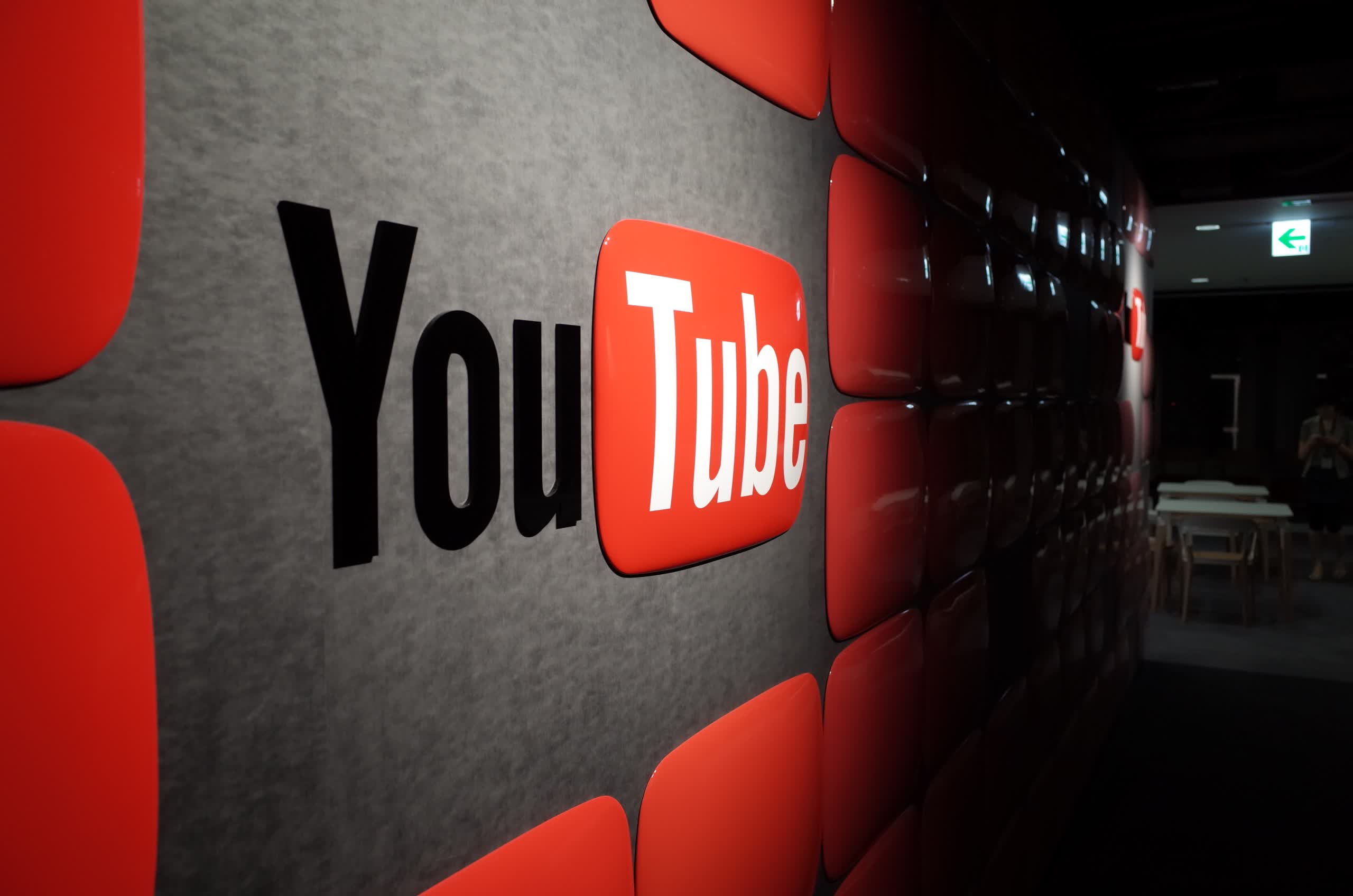A hot potato: YouTube's ad-blocking attempts have moved from the "experiment" stage to a full-blown global effort to stop users from dodging advertisements. The Google-owned company is telling viewers to either allow ads on the site, disable their adblocker, or subscribe to YouTube Premium; otherwise, they will be prevented from watching content.
In a statement shared with The Verge, YouTube communications manager Christopher Lawton confirmed that the company had expanded its ad-blocking campaign globally.
YouTube's battle against ad blocking can be traced back to May when it ran an experiment in which a popup appeared on the platform for some users warning that ad blockers were not allowed. It noted that ads allow YouTube to stay free for billions of users worldwide and that an ad-free experience is available via the paid-for YouTube Premium.

The message finished with two options: allow ads on YouTube or try YouTube Premium, which is now $13.99 per month or $139.99 per year for access to original programs and no ads. However, users could simply close the message and carry on using the ad blocker.
Things got serious in June when YouTube introduced a punishment for those who did not comply with its demand to turn off their blocking software: being limited to just three video views. But this was still classed as a small experiment.

YouTube's ad-blocking efforts intensified a few weeks ago. Android Authority highlighted the rapidly increasing number of angry posts on Reddit from users complaining about the policy and threatening to boycott YouTube completely.
Google's support page states that blocking ads on YouTube is a violation of the site's terms of service. It notes that after being warned to allow ads or sign up for YouTube Premium, those who continue to use ad blockers may no longer be able to watch videos.
Also read: Windows Phone returns from grave as an anti-ad-blocker on YouTube
YouTube brought in $29.2 billion from ad revenue in 2022 – an increase from the $28.8 billion it generated the year before – making up over 11% of Google's annual revenue. However, the $7.96 billion that came from ads in the fourth quarter of 2022 was down almost 8% year-on-year, and Google posted its second straight drop in ad sales for the first quarter of 2023.
It's easy to understand why people are angry with YouTube. In addition to introducing unskippable 30-second ads to its TV app, the company has also increased the price of YouTube Premium this year. There were also experiments that restricted YouTube's 4K content to Premium subscribers, and the platform now offers a higher bitrate "1080p Premium" option to paying users.
